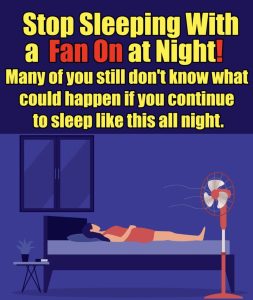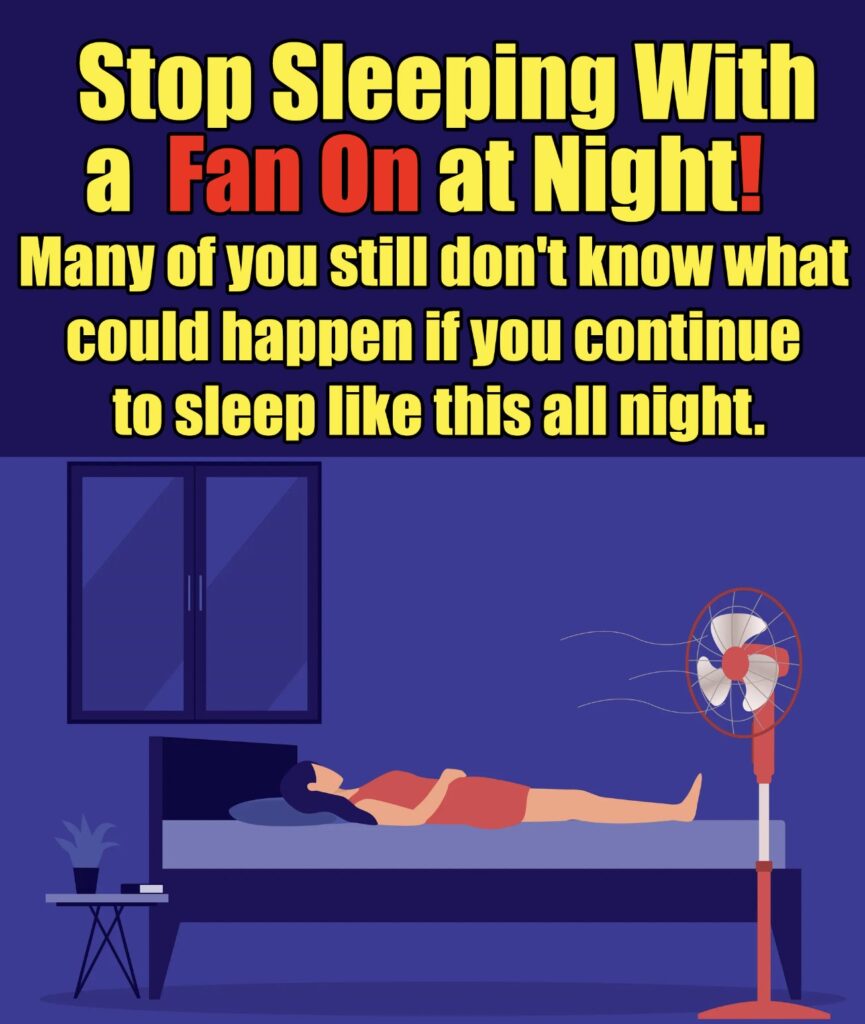According to Dr. Kelvas, the body has trouble controlling these hormones in an overly hot or cold environment, which can make it difficult to fall or stay asleep.
The Sleep Foundation states that a standard recommendation for ambient room temperature is between 60 °F (15.5 °C) and 68 °F (20 °C). It has been discovered to support a healthy sleep latency—the amount of time it takes to fall asleep—and overall high-quality sleep by supporting the body’s thermoregulatory function.
The body’s temperature
The thermoregulatory system in the human body enables us to regulate our body temperature to a healthy level independent of the outside temperature. In addition, the body uses a complex network of physiological reactions, such as shivering, sweating, and variations in blood flow to the skin, to control body temperature.
One of the body’s main ways to cool down is to sweat. Sweat glands release moisture when the body’s internal temperature rises, which evaporatively cools the body by releasing heat.

On the other hand, when the body’s temperature drops, shivering is the body’s way of producing heat. Shivering is a reflexive reaction that raises body temperature by causing muscles to contract quickly and produce heat.
Blood artery dilatation, constriction, and dilation can all affect body temperature. For instance, when the body needs to cool down, the blood vessels close to the skin’s surface widen and enable more blood to pass through them. The body releases heat through this increase in blood flow. On the other hand, blood vessels close to the skin’s surface constrict, lowering blood flow and preserving heat when the body needs to save heat.
As you prepare for bed and transition between the various stages of sleep, each of these systems comes into play. This change in temperature might be something you’ve encountered before. For instance, putting on socks when you’re feeling chilly in bed helps you feel a little warmer because our hands and feet lose a lot of heat. You will therefore feel warmer if you cover them. On the other hand, extending your feet from beneath the blanket might provide you with the necessary heat respite to help you fall asleep if you’re feeling heated under the covers but don’t want to completely remove the blanket.
Sleep and temperature
Temperature has long been a reliable indicator of when to sleep and wake up in humans. It acts as an external cue that affects our circadian cycle, often known as a “zeitgeber” or time-giver. When scientists examined sleep in three geographically separated pre-industrial communities, they discovered that participants dozed off as the outside temperature started to drop. In a similar vein, awakening frequently happened before daybreak, at the lowest possible temperature, and coincided with vasoconstriction, or the narrowing of blood vessels, as measured by the fingertip temperature.
The various phases of sleep are also influenced by temperature and thermoregulation. Your body temperature starts to decrease around two hours before you go to sleep and reaches its lowest point during slow-wave sleep, according to research. Furthermore, at this point, the brain’s temperature also somewhat drops.
Our basal body temperature is approximately 37 °C (98.6 °F), however it varies by roughly two °F at night.
While exposure to light is typically linked to the creation of melatonin, Dr. Cacho said that a cold room and a decrease in body temperature might also aid in boosting the production of this “sleep hormone.”
Studies have shown that an excessively warm environment might negatively affect slow-wave sleep (SWS) as well as the rapid eye movement (REM) phase of sleep. Your brain is most active during the REM sleep period, which is when dreams happen. Conversely, SWS is linked to decreased brain activity but higher physiological recoveries, including muscular recovery, the removal of harmful substances, including beta-amyloid plaques, from the brain, and the release of human growth hormone. But for the best possible bodily and mental health, both are crucial.
Researchers observed how ten elderly men responded to greater bedroom temperatures and how well they slept. They discovered that even a small amount of heat exposure throughout the night increased alertness, decreased REM, and increased thermal load during the overnight sleep phase.
Furthermore, warm-blooded animals experience less REM sleep when their body temperatures are higher, and more REM sleep when their body temperatures are lower, according to study from the University of California, Los Angeles.
Another element that affects the quality of sleep is humidity. According to one study, exposure to humid heat enhanced wakefulness while decreasing REM sleep and SWS. The drop in body temperature in the core was likewise inhibited by humidity.
Conversely, Dr. Kelvas clarified that if your room is very chilly, your body could have to use more energy to stay warm, which could prevent it from falling asleep more deeply.
Benefits of a cool room for sleeping
Although it may not seem obvious, room temperature has a significant impact on sleep, as many individuals who have experienced summer heat waves will attest. For instance, if you didn’t have air conditioning, have you ever had to sleep with a chilly towel on top of you or downstairs in the living room where there was more air? Or perhaps you experienced nocturnal sweats and woke up feeling sleepy? Hormonal changes during the menopausal transition cause women to become significantly more sensitive to outside temperatures. Furthermore, a woman who cycles experiences modest variations in body temperature throughout the month. More specifically, ovulation has been observed to cause an increase in it.
But the benefits of having a comfortable bedroom temperature extend beyond just making you feel more rested when you wake up. These four advantages of a cool atmosphere will encourage you to lower the thermostat this evening.
improved quality of sleep
By lowering the levels of the stress hormone cortisol, sleeping in a cool room helps your body create enough melatonin to keep you asleep. Research has indicated that by facilitating the body’s natural cooling down process during the night, you can prolong your time in the two most crucial phases of restorative sleep: rapid eye movement (REM) and slow-wave deep sleep. You won’t have to worry about night sweats disturbing your sleep at night or waking you up.
Sleep more quickly
In order to go asleep, your body’s core temperature needs to decrease. By facilitating your body’s natural circadian rhythm and allowing it to expel excess heat, you can accelerate your sleep. As a general guideline, it’s thought to be healthy if your sleep latency is between 10 and 20 minutes. For example, those who suffer from insomnia usually have trouble falling asleep because their bodies have a greater core temperature, which keeps them awake as their bodies attempt to cool down. Their sleep may be disrupted or delayed by this.
Improved control over weight
If you’re not sweating, how can sleeping in a cool environment aid in weight loss? The body’s “brown fat,” or healthy fat, is highly metabolically active tissue that is activated by cold temperatures. White fat, or the fat surrounding your stomach, will burn more if you have more brown fat. Men were subjected to regulated sleep environments with varying room temperatures by Australian researchers. They discovered that after sleeping at 66 °F (18.8 °C) for a month, the body’s amount of healthy brown fat had almost doubled.
reduced chance of illness
Increased insulin sensitivity is brought on by an increase in brown fat and may be crucial in preventing type 2 diabetes and other metabolic disorders. The Australian study also discovered that participants burnt more calories during the day when they slept in the 66 °F (18.8 °C) environment.
Furthermore, by allowing the body to enter all nine of the restorative stages of sleep and obtaining the requisite seven to nine hours of sleep, sleeping in a cold environment may help prevent Alzheimer’s disease. Both short and long sleep durations were linked to worse outcomes for older adults, including “greater beta-amyloid plaque burden, greater depressive symptoms, higher body mass index, and cognitive decline, emphasizing the importance of maintaining adequate sleep,” according to a cross-sectional study published in the journal JAMA Neurology.
What happens if the thermostat is broken?
Even if your home lacks heating and air conditioning, you can still keep yourself cool at night by including a few tips and routines into your evening routine to help your body lower its body temperature before bed.
In the evening, take a warm bath or shower.
There is a basis for the suggestion that cooling down the body with a warm bath or shower is counterintuitive. A favorable link was discovered when researchers conducted a meta-analysis of 17 studies to determine the effects of water-based passive body heating, such as taking a bath or shower, on several sleep metrics. Sleep onset delay, awakenings following sleep onset, total sleep time, sleep efficiency, slow-wave sleep, and subjective sleep quality were among the data they looked into.


